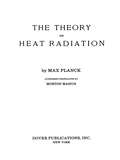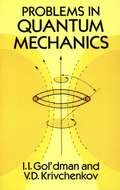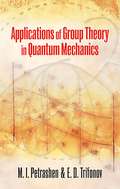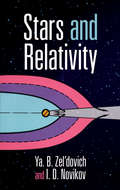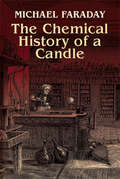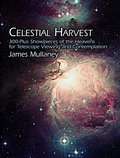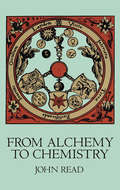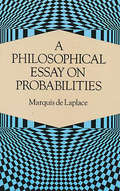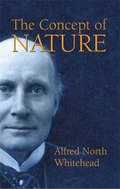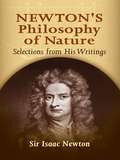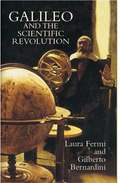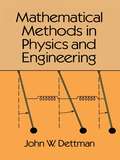- Table View
- List View
The Theory of Heat Radiation
by Max PlanckThe profoundly original ideas introduced by Nobel laureate Max Planck in this endeavor to reconcile the electromagnetic theory of radiation with experimental facts have proved to be of the greatest importance. Few modern introductions to the theory of heat radiation can match this work for precision, care, and attention to details of proof. Although Planck originally intended the book to be simply the connected account of ten years of study, he soon expanded it to a treatise which could serve as an introduction to the study of the entire theory of radiant heat in terms of the recently discovered principle of quantum action. He states his point of view in the introduction: "The hypothesis of quanta … may be reduced to the simple proposition that the thermodynamic probability of a physical state is a definite integral number, or, what amounts to the same thing, that the entropy of a state has quite a definite positive value, which, as a minimum, becomes zero, while in contrast therewith, the energy may, according to the classical thermodynamics, decrease without limit to minus infinity." Although several other points of fundamental value in thermodynamics are included, the book is basically a rigorous elaboration of this fundamental idea.The treatment starts from the simple known experimental laws of optics and advances, by gradual extension and the addition of the results of electrodynamics and thermodynamics, to the problems of spectral distribution of energy and of reversibility.
Problems in Quantum Mechanics
by V. D. Krivchenkov I. I. Gol’dmanA comprehensive collection of problems of varying degrees of difficulty in nonrelativistic quantum mechanics, with answers and completely worked-out solutions. Among the topics: one-dimensional motion, transmission through a potential barrier, commutation relations, angular momentum and spin, and motion of a particle in a magnetic field. An ideal adjunct to any textbook in quantum mechanics, useful in courses in atomic and nuclear physics, mathematical methods in physics, quantum statistics and applied differential equations. 1961 edition.
Applications of Group Theory in Quantum Mechanics (Dover Books on Physics)
by M. I. Petrashen J. L. TrifonovGeared toward postgraduate students, theoretical physicists, and researchers, this advanced text explores the role of modern group-theoretical methods in quantum theory. The authors based their text on a physics course they taught at a prominent Soviet university. Readers will find it a lucid guide to group theory and matrix representations that develops concepts to the level required for applications.The text's main focus rests upon point and space groups, with applications to electronic and vibrational states. Additional topics include continuous rotation groups, permutation groups, and Lorentz groups. A number of problems involve studies of the symmetry properties of the Schroedinger wave function, as well as the explanation of "additional" degeneracy in the Coulomb field and certain subjects in solid-state physics. The text concludes with an instructive account of problems related to the conditions for relativistic invariance in quantum theory.
Stars and Relativity
by Ya. B. Zel’dovich I. D. NovikovThese authors ranked among the greatest astrophysicists of the 20th century, and their work is remarkable for its deep physical insights and clarity of presentation. This book explores general relativity, properties of matter under astrophysical conditions, stars, and stellar systems. It constitutes a valuable resource for today's physicists, astronomers, and graduate students. 1971 edition.
Stars and Relativity
by Ya. B. Zel’dovich I. D. NovikovThis edition reprints Volume 1 of an important two-volume Russian work which, at the time of its original publication, was the only comprehensive review in existence of the entire field of relativistic astrophysics. Subsequently revised and enlarged, both volumes remain today a valuable resource for physicists, astronomers, and others working in the field.The present volume is devoted to general relativity, properties of matter under astrophysical conditions, and stars and stellar systems. Individual topics include the theory of gravitation (including Einstein's gravitational equations), the equation of state of matter (cold matter, properties of matter at high temperatures, etc.) and relativistic stages of evolution of cosmic objects (equilibrium and stability of stars, stellar evolution, star clusters, more).The authors of this book rank among the great astrophysicists of the century: their work is especially remarkable for its deep physical insights and clarity of presentation. Those features are here in abundance, ready to inform and inspire both practicing astrophysicists and aspiring students.
Stars and Relativity
by Ya. B. Zel’dovich I. D. NovikovThis edition reprints Volume 1 of an important two-volume Russian work which, at the time of its original publication, was the only comprehensive review in existence of the entire field of relativistic astrophysics. Subsequently revised and enlarged, both volumes remain today a valuable resource for physicists, astronomers, and others working in the field.The present volume is devoted to general relativity, properties of matter under astrophysical conditions, and stars and stellar systems. Individual topics include the theory of gravitation (including Einstein's gravitational equations), the equation of state of matter (cold matter, properties of matter at high temperatures, etc.) and relativistic stages of evolution of cosmic objects (equilibrium and stability of stars, stellar evolution, star clusters, more).The authors of this book rank among the great astrophysicists of the century: their work is especially remarkable for its deep physical insights and clarity of presentation. Those features are here in abundance, ready to inform and inspire both practicing astrophysicists and aspiring students.
Stars and Relativity
by Ya. B. Zel’dovich I. D. NovikovThis edition reprints Volume 1 of an important two-volume Russian work which, at the time of its original publication, was the only comprehensive review in existence of the entire field of relativistic astrophysics. Subsequently revised and enlarged, both volumes remain today a valuable resource for physicists, astronomers, and others working in the field.The present volume is devoted to general relativity, properties of matter under astrophysical conditions, and stars and stellar systems. Individual topics include the theory of gravitation (including Einstein's gravitational equations), the equation of state of matter (cold matter, properties of matter at high temperatures, etc.) and relativistic stages of evolution of cosmic objects (equilibrium and stability of stars, stellar evolution, star clusters, more).The authors of this book rank among the great astrophysicists of the century: their work is especially remarkable for its deep physical insights and clarity of presentation. Those features are here in abundance, ready to inform and inspire both practicing astrophysicists and aspiring students.
Stars and Relativity
by Ya. B. Zel’dovich I. D. NovikovThis edition reprints Volume 1 of an important two-volume Russian work which, at the time of its original publication, was the only comprehensive review in existence of the entire field of relativistic astrophysics. Subsequently revised and enlarged, both volumes remain today a valuable resource for physicists, astronomers, and others working in the field.The present volume is devoted to general relativity, properties of matter under astrophysical conditions, and stars and stellar systems. Individual topics include the theory of gravitation (including Einstein's gravitational equations), the equation of state of matter (cold matter, properties of matter at high temperatures, etc.) and relativistic stages of evolution of cosmic objects (equilibrium and stability of stars, stellar evolution, star clusters, more).The authors of this book rank among the great astrophysicists of the century: their work is especially remarkable for its deep physical insights and clarity of presentation. Those features are here in abundance, ready to inform and inspire both practicing astrophysicists and aspiring students.
Stars and Relativity
by Ya. B. Zel’dovich I. D. NovikovThis edition reprints Volume 1 of an important two-volume Russian work which, at the time of its original publication, was the only comprehensive review in existence of the entire field of relativistic astrophysics. Subsequently revised and enlarged, both volumes remain today a valuable resource for physicists, astronomers, and others working in the field.The present volume is devoted to general relativity, properties of matter under astrophysical conditions, and stars and stellar systems. Individual topics include the theory of gravitation (including Einstein's gravitational equations), the equation of state of matter (cold matter, properties of matter at high temperatures, etc.) and relativistic stages of evolution of cosmic objects (equilibrium and stability of stars, stellar evolution, star clusters, more).The authors of this book rank among the great astrophysicists of the century: their work is especially remarkable for its deep physical insights and clarity of presentation. Those features are here in abundance, ready to inform and inspire both practicing astrophysicists and aspiring students.
Stars and Relativity
by Ya. B. Zel’dovich I. D. NovikovThis edition reprints Volume 1 of an important two-volume Russian work which, at the time of its original publication, was the only comprehensive review in existence of the entire field of relativistic astrophysics. Subsequently revised and enlarged, both volumes remain today a valuable resource for physicists, astronomers, and others working in the field.The present volume is devoted to general relativity, properties of matter under astrophysical conditions, and stars and stellar systems. Individual topics include the theory of gravitation (including Einstein's gravitational equations), the equation of state of matter (cold matter, properties of matter at high temperatures, etc.) and relativistic stages of evolution of cosmic objects (equilibrium and stability of stars, stellar evolution, star clusters, more).The authors of this book rank among the great astrophysicists of the century: their work is especially remarkable for its deep physical insights and clarity of presentation. Those features are here in abundance, ready to inform and inspire both practicing astrophysicists and aspiring students.
Stars and Relativity
by Ya. B. Zel’dovich I. D. NovikovThis edition reprints Volume 1 of an important two-volume Russian work which, at the time of its original publication, was the only comprehensive review in existence of the entire field of relativistic astrophysics. Subsequently revised and enlarged, both volumes remain today a valuable resource for physicists, astronomers, and others working in the field.The present volume is devoted to general relativity, properties of matter under astrophysical conditions, and stars and stellar systems. Individual topics include the theory of gravitation (including Einstein's gravitational equations), the equation of state of matter (cold matter, properties of matter at high temperatures, etc.) and relativistic stages of evolution of cosmic objects (equilibrium and stability of stars, stellar evolution, star clusters, more).The authors of this book rank among the great astrophysicists of the century: their work is especially remarkable for its deep physical insights and clarity of presentation. Those features are here in abundance, ready to inform and inspire both practicing astrophysicists and aspiring students.
Stars and Relativity
by Ya. B. Zel’dovich I. D. NovikovThis edition reprints Volume 1 of an important two-volume Russian work which, at the time of its original publication, was the only comprehensive review in existence of the entire field of relativistic astrophysics. Subsequently revised and enlarged, both volumes remain today a valuable resource for physicists, astronomers, and others working in the field.The present volume is devoted to general relativity, properties of matter under astrophysical conditions, and stars and stellar systems. Individual topics include the theory of gravitation (including Einstein's gravitational equations), the equation of state of matter (cold matter, properties of matter at high temperatures, etc.) and relativistic stages of evolution of cosmic objects (equilibrium and stability of stars, stellar evolution, star clusters, more).The authors of this book rank among the great astrophysicists of the century: their work is especially remarkable for its deep physical insights and clarity of presentation. Those features are here in abundance, ready to inform and inspire both practicing astrophysicists and aspiring students.
Stars and Relativity
by Ya. B. Zel’dovich I. D. NovikovThis edition reprints Volume 1 of an important two-volume Russian work which, at the time of its original publication, was the only comprehensive review in existence of the entire field of relativistic astrophysics. Subsequently revised and enlarged, both volumes remain today a valuable resource for physicists, astronomers, and others working in the field.The present volume is devoted to general relativity, properties of matter under astrophysical conditions, and stars and stellar systems. Individual topics include the theory of gravitation (including Einstein's gravitational equations), the equation of state of matter (cold matter, properties of matter at high temperatures, etc.) and relativistic stages of evolution of cosmic objects (equilibrium and stability of stars, stellar evolution, star clusters, more).The authors of this book rank among the great astrophysicists of the century: their work is especially remarkable for its deep physical insights and clarity of presentation. Those features are here in abundance, ready to inform and inspire both practicing astrophysicists and aspiring students.
Stars and Relativity
by Ya. B. Zel’dovich I. D. NovikovThis edition reprints Volume 1 of an important two-volume Russian work which, at the time of its original publication, was the only comprehensive review in existence of the entire field of relativistic astrophysics. Subsequently revised and enlarged, both volumes remain today a valuable resource for physicists, astronomers, and others working in the field.The present volume is devoted to general relativity, properties of matter under astrophysical conditions, and stars and stellar systems. Individual topics include the theory of gravitation (including Einstein's gravitational equations), the equation of state of matter (cold matter, properties of matter at high temperatures, etc.) and relativistic stages of evolution of cosmic objects (equilibrium and stability of stars, stellar evolution, star clusters, more).The authors of this book rank among the great astrophysicists of the century: their work is especially remarkable for its deep physical insights and clarity of presentation. Those features are here in abundance, ready to inform and inspire both practicing astrophysicists and aspiring students.
Stars and Relativity
by Ya. B. Zel’dovich I. D. NovikovThis edition reprints Volume 1 of an important two-volume Russian work which, at the time of its original publication, was the only comprehensive review in existence of the entire field of relativistic astrophysics. Subsequently revised and enlarged, both volumes remain today a valuable resource for physicists, astronomers, and others working in the field.The present volume is devoted to general relativity, properties of matter under astrophysical conditions, and stars and stellar systems. Individual topics include the theory of gravitation (including Einstein's gravitational equations), the equation of state of matter (cold matter, properties of matter at high temperatures, etc.) and relativistic stages of evolution of cosmic objects (equilibrium and stability of stars, stellar evolution, star clusters, more).The authors of this book rank among the great astrophysicists of the century: their work is especially remarkable for its deep physical insights and clarity of presentation. Those features are here in abundance, ready to inform and inspire both practicing astrophysicists and aspiring students.
Stars and Relativity
by Ya. B. Zel’dovich I. D. NovikovThis edition reprints Volume 1 of an important two-volume Russian work which, at the time of its original publication, was the only comprehensive review in existence of the entire field of relativistic astrophysics. Subsequently revised and enlarged, both volumes remain today a valuable resource for physicists, astronomers, and others working in the field.The present volume is devoted to general relativity, properties of matter under astrophysical conditions, and stars and stellar systems. Individual topics include the theory of gravitation (including Einstein's gravitational equations), the equation of state of matter (cold matter, properties of matter at high temperatures, etc.) and relativistic stages of evolution of cosmic objects (equilibrium and stability of stars, stellar evolution, star clusters, more).The authors of this book rank among the great astrophysicists of the century: their work is especially remarkable for its deep physical insights and clarity of presentation. Those features are here in abundance, ready to inform and inspire both practicing astrophysicists and aspiring students.
Stars and Relativity
by Ya. B. Zel’dovich I. D. NovikovThis edition reprints Volume 1 of an important two-volume Russian work which, at the time of its original publication, was the only comprehensive review in existence of the entire field of relativistic astrophysics. Subsequently revised and enlarged, both volumes remain today a valuable resource for physicists, astronomers, and others working in the field.The present volume is devoted to general relativity, properties of matter under astrophysical conditions, and stars and stellar systems. Individual topics include the theory of gravitation (including Einstein's gravitational equations), the equation of state of matter (cold matter, properties of matter at high temperatures, etc.) and relativistic stages of evolution of cosmic objects (equilibrium and stability of stars, stellar evolution, star clusters, more).The authors of this book rank among the great astrophysicists of the century: their work is especially remarkable for its deep physical insights and clarity of presentation. Those features are here in abundance, ready to inform and inspire both practicing astrophysicists and aspiring students.
The Chemical History of a Candle
by Michael FaradayOne of the greatest experimental scientists of all time, Michael Faraday (1791–1867) developed the first electric motor, electric generator, and dynamo — essentially creating the science of electrochemistry. This book, the result of six lectures he delivered to young students at London’s Royal Institution, concerns another form of energy — candlelight.Faraday titled the lectures "The Chemical History of a Candle," choosing the subject because, as he explained, "There is not a law under which any part of this universe is governed which does not come into play and is not touched upon [during the time a candle burns]."That statement is the foundation for a book that describes, with great clarity, the components, function and weight of the atmosphere; the function of a candle wick; capillary attraction; the carbon content in oxygen and living bodies; the production of carbon dioxide from coal gas and sugar; the properties of carbonic acid; respiration and its analogy to the burning of a candle; and much more. There is also a chapter comprising Faraday's "Lecture on Platinum."A useful classroom teaching tool, this classic text will also appeal to a wide audience interested in scientific inquiry.
Celestial Harvest: 300-Plus Showpieces of the Heavens for Telescope Viewing and Contemplation (Dover Books on Astronomy)
by James MullaneyThis book describes over 300 celestial wonders that can be viewed with common binoculars and low-power "backyard" telescopes incorporating refractors and reflectors.In addition to such showpieces as the Andromeda Galaxy, the largest and brightest of all galaxies after the Milky Way, and the Blue Snowball, one of the autumn sky's outstanding planetary nebulas, over 20 other special objects are listed and characterized, many of which are visible to the unaided eye on a dark, clear night.The sun, moon, Venus, Mars, Jupiter, Saturn, and other members of the earth's solar system are also described, as are such bright asteroids as Ceres, Juno, and Vesta; open star clusters, diffuse nebulas, supernova remnants, spiral galaxies, elliptical galaxies, and a host of other astronomical phenomena. An abbreviated descriptive format is used to accommodate as much information on observation as possible for both field and armchair use.
From Alchemy to Chemistry (Dover Science Books)
by John ReadWritten for the layman, this accessible history takes a broad, humanistic perspective, eschewing chemical equations and formulae. Instead it concentrates on the great figures of chemistry and the ideas that revolutionized the science, from earliest history to the modern era.Much of the book is devoted to alchemy and such topics as the philosopher's stone, alchemical crypticism and symbolism, pseudo-alchemists, Paracelsus, and the "swan song" of alchemy as the scientific revolution took hold. In the final chapters, the author takes up the development of modern chemistry, including atomic theory, the nature of the elements, the beginning of organic chemistry, and more. Broad in scope, erudite yet readable, this rich and absorbing narrative will appeal to anyone interested in the long and colorful history of chemical science. Glossary. 50 illustrations.
A Philosophical Essay on Probabilities
by Marquis De LaplaceThis classic introduces the concepts and uses of probability theory. It demonstrates, without the use of higher mathematics, the application of probability to games of chance, physics, reliability of witnesses, astronomy, insurance, democratic government, and many other areas. It also shows how scientists can express complex ideas in simple terms.
The Concept of Nature: The Tarner Lectures Delivered In Trinity College, November 1919 (classic Reprint)
by Alfred North WhiteheadIn addition to his brilliant achievements in theoretical mathematics, Alfred North Whitehead exercised an extensive knowledge of philosophy and literature that informs and elevates all of his works. This book represents one of his most significant achievements in the field of natural philosophy. The Concept of Nature originated with Whitehead's Tarner Lectures, and it offers undergraduate students and other readers an absorbing exploration of the fundamental problems of substance, space, and time.Whitehead's discussions are highlighted by a criticism of Einstein's method of interpreting results, and by his alternative development of the celebrated theory of the four-dimensional space-time manifold.
Newton's Philosophy of Nature: Selections from His Writings
by Sir Isaac Newton H. S. ThayerAside from the Principia and occasional appearances of the Opticks, Newton's writings have remained largely inaccessible to students of philosophy, science, and literature as well as to other readers. This book provides a remedy with wide representation of the interests, problems, and diverse philosophic issues that preoccupied the greatest scientific mind of the seventeenth century.Grouped in sections corresponding to methods, principles, and theological considerations, these selections feature cross-references to related essays. Starting with an examination of the methods of natural philosophy--including the rules of reasoning, the formulation of hypotheses, and the experimental method--the essays explore the laws of motion and the relationships between God and gravity, creation, and universal design. Discussions of questions related to natural philosophy include theories on light, colors, and perceptions. The volume concludes with absorbing selections from the Opticks and a helpful series of historical and explanatory notes.
Galileo and the Scientific Revolution
by Laura Fermi Gilberto BernardiniAn absorbing account of the origins of modern science as well as a biography of the revolutionary thinker, this inspiring book was co-written by a former director of the Italian Institute for Nuclear Physics and a historian of science (who was also the wife of physicist Enrico Fermi). It begins in Galileo's youth, with his return to his native city of Pisa to train as a physician. Instead, the student became captivated by the power of mathematical reasoning — an interest that led him to apply mathematical logic to natural events and, ultimately, to invent the concept of experimentation. Galileo's progress from student to teacher to scientific innovator is traced, with particular emphasis on his experiments with building and refining telescopes and his unprecedented observations of the moon and planets. The dramatic results of his findings, including his refutation of Aristotelian theory and his support of Copernican doctrine, are related in full, along with his clash with the papal inquisition and his tragic demise under house arrest. Written with a warm appreciation for the wonders of Galileo's achievements and with impeccable scholarship, this book concludes with a survey of the scientist's remarkable legacy. 12 figures. Appendix. Bibliography. Index.
Mathematical Methods in Physics and Engineering (Dover Books on Physics)
by John W. DettmanIntended for college-level physics, engineering, or mathematics students, this volume offers an algebraically based approach to various topics in applied math. It is accessible to undergraduates with a good course in calculus which includes infinite series and uniform convergence. Exercises follow each chapter to test the student's grasp of the material; however, the author has also included exercises that extend the results to new situations and lay the groundwork for new concepts to be introduced later. A list of references for further reading will be found at the end of each chapter. For this second revised edition, Professor Dettman included a new section on generalized functions to help explain the use of the Dirac delta function in connection with Green's functions. In addition, a new approach to series solutions of ordinary differential equations has made the treatment independent of complex variable theory. This means that the first six chapters can be grasped without prior knowledge of complex variables. However, since Chapter 8 depends heavily on analytic functions of a complex variable, a new Chapter 7 on analytic function theory has been written.
